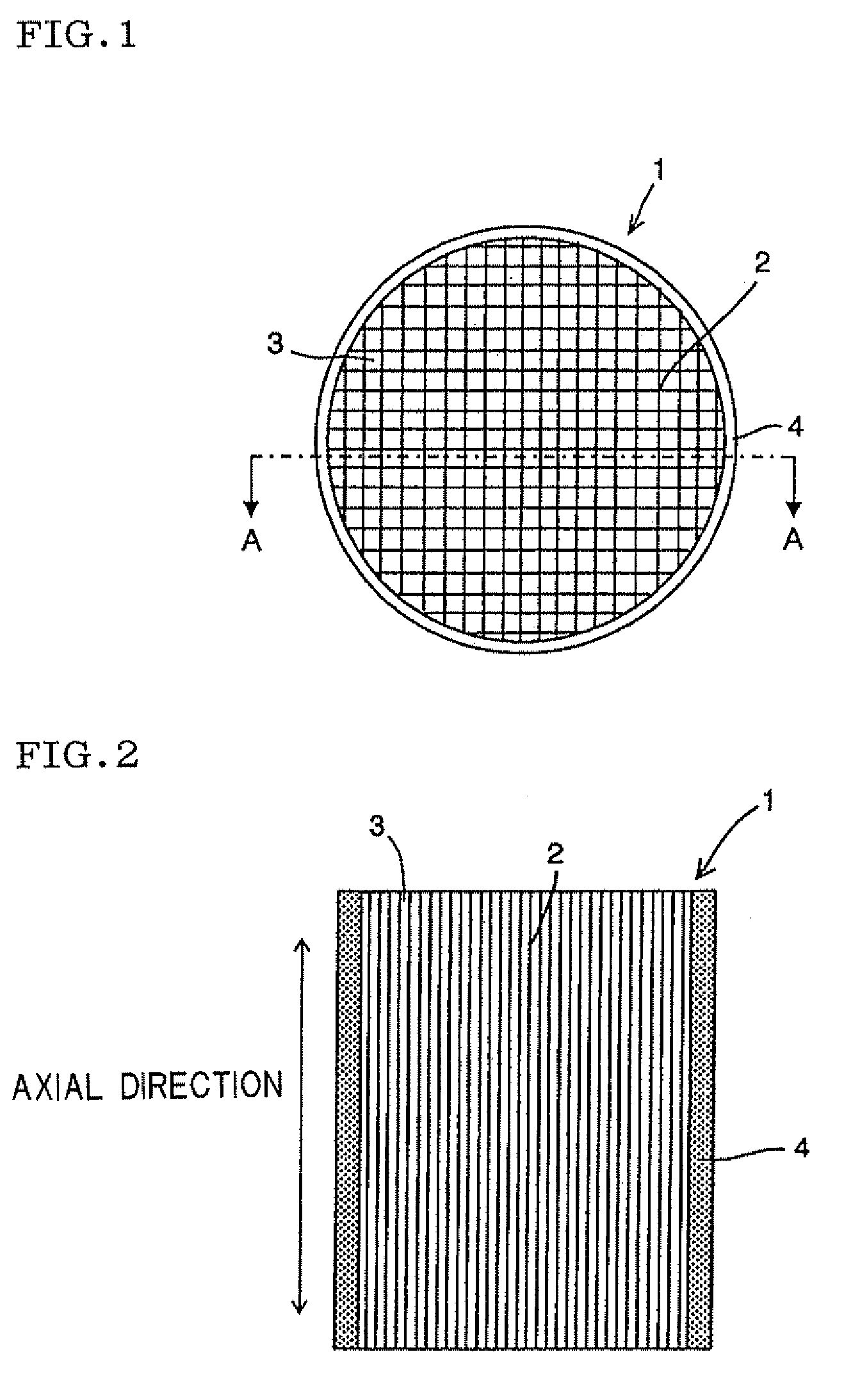Drying method of formed ceramic article
- Summary
- Abstract
- Description
- Claims
- Application Information
AI Technical Summary
Benefits of technology
Problems solved by technology
Method used
Image
Examples
example 1
[0063][Formed Honeycomb Article] As a ceramic material, a cordierite material mixed with alumina, kaolin and talc was used, mixed with a binding material including an organic binder, a pore former and water (33 mass %) as a dispersion medium, and kneaded to obtain a kneaded clay. The resultant kneaded clay was extrusion-formed to obtain a formed honeycomb article having a diameter of 430 mm, a length (an axial length) of 600 mm, a columnar outer shape and a square sectional shape crossing the central axis of each cell at right angles. The resultant formed honeycomb article had a cell density of 300 cells / in2 (in is inch and 2.54 cm in terms of SI unit), a partition wall thickness of 310 μm and a mass of 58 kg.
[0064][Drying Method] The resultant formed honeycomb article was subjected to batch dielectric drying by use of a dielectric drying device shown in FIG. 8 with a frequency of 13 MHz and an output of 10 kW for a heating time of 30 minutes. The dielectric drying device shown in F...
examples 2 , 3
Examples 2, 3, Comparative Examples 1 to 4
[0069]One or both of the formed honeycomb article specifications and the drying method were changed. In conformity to Example 1, formed honeycomb articles were prepared and dried, moisture contents were measured, and evaluations were also performed. The results of the evaluations are shown together with the specifications of the formed honeycomb articles, drying methods and moisture contents after the drying in Table 1.
TABLE 1Formed honeycombDrying methodsarticleOutput [kW]Heating time [min.]Moisture content [%]EvaluationDiameter ×Micro-Micro-AfterAfterSelflengthMassDielectricwaveDielectricwavedielectricmicrowaveigni-[mm][kg]StepdryingdryingdryingdryingdryingdryingCrackDischargetionExample 1φ430 × 60058Microwave10243030264NoneNoneNonedrying afterdielectricdryingExample 2φ430 × 60058Microwave10246012.5175NoneNoneNonedrying afterdielectricdryingExample 3φ290 × 60021Microwave1024187.5204NoneNoneNonedrying afterdielectricdryingComparativeφ430 × ...
PUM
| Property | Measurement | Unit |
|---|---|---|
| Percent by mass | aaaaa | aaaaa |
| Percent by mass | aaaaa | aaaaa |
| Percent by mass | aaaaa | aaaaa |
Abstract
Description
Claims
Application Information
 Login to View More
Login to View More - R&D
- Intellectual Property
- Life Sciences
- Materials
- Tech Scout
- Unparalleled Data Quality
- Higher Quality Content
- 60% Fewer Hallucinations
Browse by: Latest US Patents, China's latest patents, Technical Efficacy Thesaurus, Application Domain, Technology Topic, Popular Technical Reports.
© 2025 PatSnap. All rights reserved.Legal|Privacy policy|Modern Slavery Act Transparency Statement|Sitemap|About US| Contact US: help@patsnap.com



